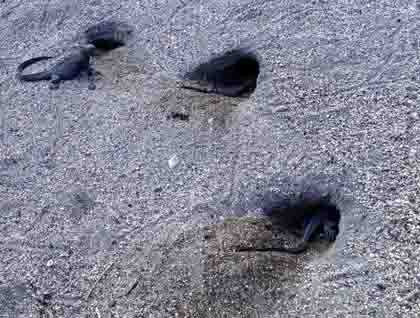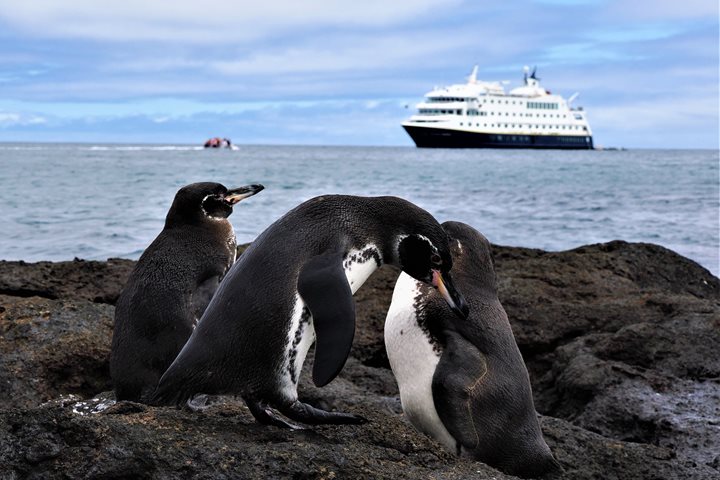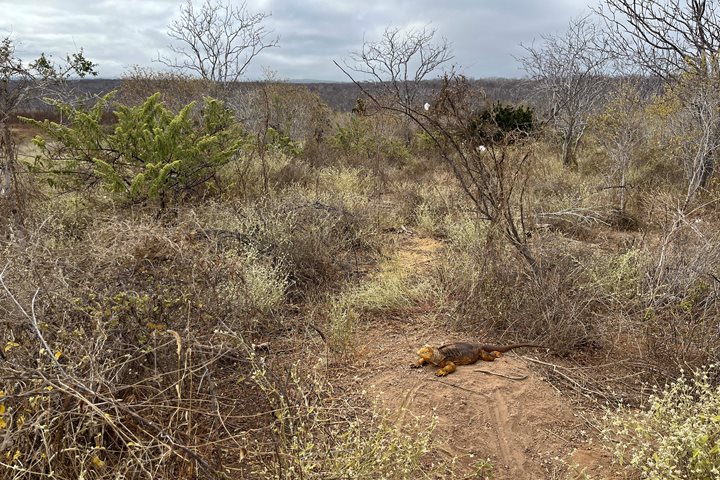Today we navigated through the western waters of the Galapagos towards Fernandina, the youngest island of the archipelago.
Fernandina is where the more recent eruption happened, and therefore fresh lava flows can be found everywhere we look. Very few species of animals have been able to colonize this island, and there are also not many endemic plants in this part of Galapagos. Fernandina is home to the majority of marine iguanas in the Galapagos, as well as the only flightless cormorant in the world.
This morning we disembarked at the only visitor site of the island, Punta Espinoza. The name of the site comes from the incredible number of marine iguanas living here. At this time of year, the iguanas have mated, and egg-carrying females start digging a nest for their precious future babies. During our walk we observed different stages of the reproduction of this species, as well as the unfortunate disappearance of some which had become the prey of Galapagos hawks. Also some sea turtles warming up their bodies and playful baby sea lions entertained us.
After our long walk in this pristine island, we returned to the National Geographic Endeavour and moved onward to Isabela Island.
Isabela consists of five active volcanoes and one collapsed volcano that no longer erupts. On the map, Isabela appears to have the shape of a sea horse, and today we visited the lower lip of it.
Punta Vicente Roca is a site that we can now visit, due the collapse of half of its caldera. This is where we were able to offer our first snorkeling excursion with sea turtles, penguins, flightless cormorants and many different species of fish. Later in the day, after a quick change onboard, the Zodiacs were deployed again to take guests on a ride along the coast of this extinct volcano. We encountered many sea birds and surprising volcanic features, which delighted us all.
At the end of the day, as we continued our navigation, we gathered at the bow of our ship to celebrate our crossing of the equatorial line, thus ending our third day of activities in the famous Galapagos Island.







